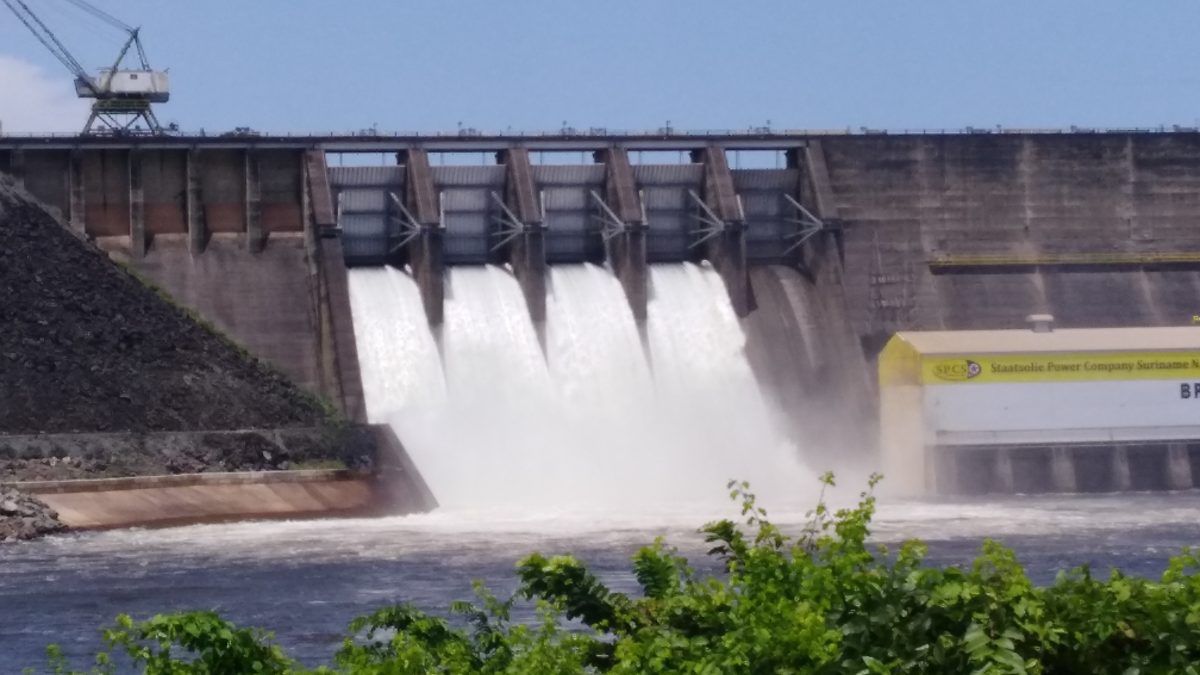Brokopondo Reservoir

The Dam is also called Afobakadam
In the Brokopondo district is the Brokopondo reservoir, it is a large lake and about forty meters deep and has an area of 135,000 hectares. When the dam was built, the area that would be flooded was not cleared. As a result, trunks of trees protrude above the water, partly the trees were Walabas (axe wood) and green wood. The wood species have been under water for so long and often no longer need to be chemically treated against insects. In addition, the wood is so strong that it has not started to rot after decades.
n 1915, bauxite was discovered in Suriname, in the Marowijne district, but also elsewhere. A lot of electricity is needed to process bauxite into aluminum. This could be generated with hydropower. To this end, W.J. van Blommestein the 54 meter high dam in the Suriname River (officially called Prof. dr. ir. W.J. van Blommesteinmeer). The dam was initially to be built at Brokopondo, but Afrobaka, a few kilometers upstream, turned out to be more suitable. The dam is therefore called Afobaka Dam.
The top of Brownsberg Hill can be seen from the lake. Brownsberg is located in a nature park and covers more than 12,200 hectares. In 1958 the Surinamese government and Alcoa concluded the Brokopondo Agreement. This gave Alcoa (American aluminum producer) the right to cheap electricity and a 75-year concession for mining bauxite in exchange for building the dam and the hydroelectric power station, among other things.
Construction of the main dam started in 1960. It was 1.3 km long. 14 auxiliary dams also had to be built to prevent the water from draining. On February 6, 1964, the main dam was closed and a few months later the lake was full enough to start generating electricity from hydropower. The complete filling of the lake lasted due to extremely low rainfall during the first two years. The turbines have an electrical capacity of 189 MW.
About five thousand Maroons had to move in connection with the creation of the lake. Transmigration villages were set up for them, but the houses were very small and the promised compensation was about 6 guilders per person. One of the officials involved in the resettlement was the later army chief Desi Bouterse. The animals in the area were rescued as much as possible (Operation Gwamba).
On December 31, 2019, Alcoa transferred ownership of the hydroelectric plant to the government. Subsequently, the Staatsolie Maatschappij became responsible for the management of the dam. The capacity utilization of the power station is about 55%, partly due to insufficient water supply.
Staatsolie wants to improve the water supply by implementing the OpoJai project. By diverting the water from the Tapanahoni to the reservoir, capacity utilization is expected to increase to 88%.
Suriname (in 2012) has the lowest dependency on fossil fuels in the Caribbean, mainly because of this reservoir. 95% of the country’s electricity is covered by hydroelectric generation. That corresponds to 26% of the country’s total energy needs. Fish stocks have undergone major changes due to the closure of the dam and the backfilling of the lake. Before the closure, there were about 172 species of fish in the Suriname River and only 41 species were found after it. In 2020, the Surinamese government still does not have a complete grip on the often illegal activities of the gold diggers, which does not leave the reservoir untouched.
